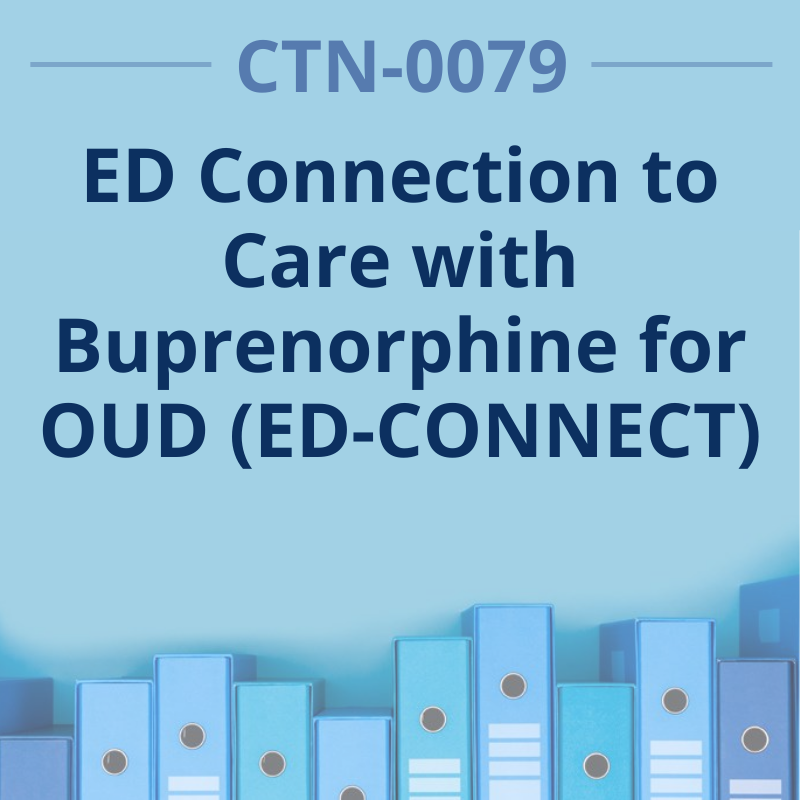CTN-0079: Emergency Department Connection to Care with Buprenorphine for Opioid Use Disorder (ED-CONNECT)

Ryan McCormack, MD
Lead Investigator
New York University School of Medicine
Ryan.McCormack@nyulangone.org
Kathryn Hawk, MD, MHS
Co-Lead Investigator
Yale School of Medicine
kathryn.hawk@yale.edu
John Rotrosen, MD
Co-Lead Investigator
New York University School of Medicine
John.Rotrosen@nyulangone.org
The opioid epidemic has reached a critical state, drawing widespread attention and support to address this public health crisis. For many reasons, the Emergency Department (ED) is a critical venue to initiate opioid use disorder (OUD) interventions. ED patients have a disproportionately high prevalence of substance use disorders, are at an elevated risk of overdose, and many do not access healthcare elsewhere. Despite this, OUD interventions are rarely initiated in EDs. As a complement to the CTN-0069 protocol, this study will evaluate the feasibility, acceptability, and impact of introducing a clinical protocol for OUD screening, buprenorphine (sublingual or extended-release) treatment initiation, and referral to ongoing OUD medication treatment in ED settings with high need, limited resources, and differing staffing structures.
Related Studies
Primary Findings
This multicenter implementation study employed implementation facilitation using a participatory action research approach to develop, introduce, and refine site-specific clinical protocols for ED-initiated buprenorphine and referral in 3 EDs not previously initiating buprenorphine.
Within 3 months of initiating the implementation facilitation activities, each site implemented buprenorphine programs. During the 6-month programmatic evaluation, there were 134 ED-buprenorphine candidates among 2,522 encounters involving opioid use. A total of 52 (41.6%) practitioners initiated buprenorphine administration to 112 (85.1%; 95% confidence interval [CI] 79.7% to 90.4%) unique patients. Among 40 enrolled patient-participants, 49.0% (35.6% to 62.5%) were engaged in addiction treatment 30 days later (confirmed); 26 (68.4%) reported attending one or more treatment visits; there was a 4-fold decrease in self-reported overdose events. The ED clinician readiness increased by a median of 5.02 (95% CI: 3.56 to 6.47) from 1.92/10 to 6.95/10 (n(pre)=80, n(post)=83).
The implementation facilitation enabled researchers to effectively implement ED-based buprenorphine programs across heterogeneous ED settings rapidly, which was associated with promising implementation and exploratory patient-level outcomes.

Primary Outcomes Article: McCormack RP, et al. Implementing programs to initiate buprenorphine for opioid use disorder treatment in high-need, low-resource emergency departments: A nonrandomized trial. Annals of Emergency Medicine 2023 (in press). [get article]
Related Resources
Node Involvement
Lead Node(s):
All Participating Nodes: